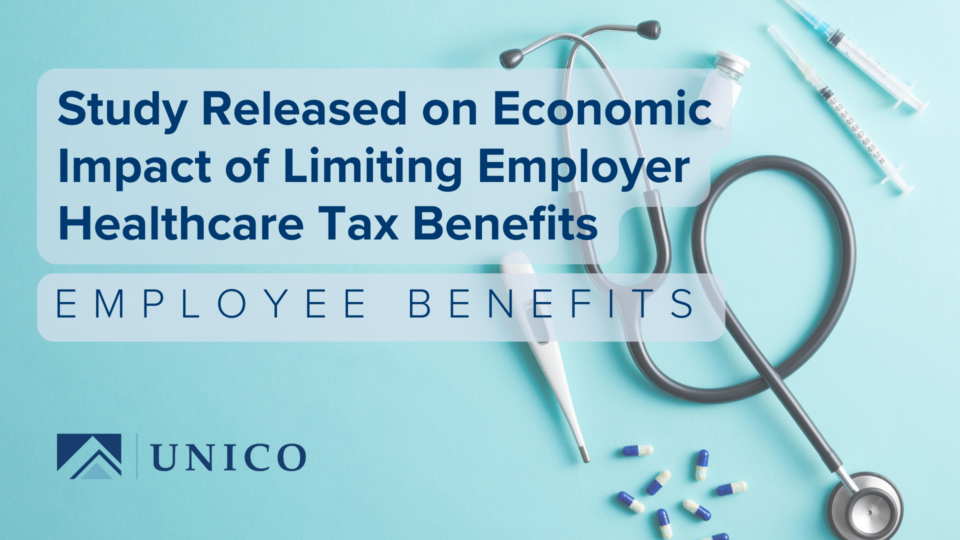Attracting and retaining employees has challenged employers since the onset of the COVID-19 pandemic. In 2024, the labor market is expected to cool slightly; however, competition for talent will remain.
Current labor challenges are forcing employers to find ways to balance rising health care costs and inflation while providing employees with benefits they value and need. Understanding this year’s key employee benefits trends can help employers attract and retain talented individuals in an evolving labor market.

1. Managing Health Care Costs
High inflation, provider shortages, an increase in serious chronic conditions and deferred care due to the pandemic continue to drive health care costs. This year, employers may struggle to mitigate skyrocketing health care costs while keeping benefits affordable for employees. Thus, many employers will plan and implement multiple cost-saving strategies in 2024 to mitigate rising health care costs, such as:
- Modifying health plan designs
- Incorporating health care analytics
- Implementing pharmacy management strategies
- Maintaining full coverage of recommended prevention and screening services
- Tailoring benefits to meet employees’ specific needs
- Expanding voluntary benefits offerings
2. Increasing Personalization and Flexibility
The modern workforce is comprised of four or five generations of workers from various backgrounds. In 2023, many employers struggled to find a benefits plan that satisfied their entire workforce. In 2024, employers will increasingly offer personalized and flexible benefits to address the unique needs and expectations of individual employees. The following are popular options for benefits customization:
- Flexible work arrangements
- Customized retirement plans
- Convertible paid time off
- Domestic partner benefits
- Broader medical coverage
- Diverse wellness programs
3. Prioritizing Employee Mental Health
Employee mental health is a priority for many employers in 2024. Countless employees are experiencing a combination of mental health concerns, including stress, lack of motivation, and reduced focus. Given the impact employees’ mental health can have on an organization, employers are considering employees’ mental health while making important business decisions in 2024. To this end, savvy employers will continue prioritizing employee mental health in 2024 with the following methods:
- Finding specialized mental health treatment from chosen vendors
- Providing meditation and mindfulness resources
- Expanding employee assistance programs to address burnout and other mental health challenges
- Expanding mental health service offerings
- Investing in programs that build resiliency and improve coping strategies
4. Focusing on Belonging
While more employers invested in diversity, equity, and inclusion (DEI) initiatives in 2023, many employees – especially those from underrepresented and marginalized groups – continue to feel excluded. In 2024, employers are expected to address belonging to bridge the gap between the existing DEI initiatives and the impact felt by employees. Many employers are more often focusing on the factors that impact workplace belonging, such as organizational culture, leadership behaviors, and personal relationships among employees. Others are introducing initiatives such as:
- Encouraging supervisors to check in with employees
- Promoting social bonds within the organization
- Encouraging open-door policies
- Facilitating trusting relationships (e.g., mentorships)
- Celebrating employee achievements
5. Expanding Family-building and Reproductive Health Benefits
Reproductive health care benefits became a key issue for employers in 2023 after the U.S. Supreme Court’s Dobbs v. Jackson Women’s Health Organization decision ended federal protections for abortion rights and permitted states to implement their own regulations. Numerous employers will continue to expand reproductive health benefits in 2024 to meet employee needs and remain competitive.
Additionally, more employers are offering family-building benefits, as they have proven to be highly valued among employees who are looking to start or build their families. In the next year, many employers are expanding benefits offerings to include the following:
- Paid parental and adoption leave
- Child care subsidies
- Flexible scheduling and remote and hybrid work options
- Family planning assistance
- Pregnancy, lactation, postpartum, and menopause support
6. Balancing Flexibility With Return-to-Office Mandates
Many employers responded to 2023’s tight labor market by offering remote and flexible work opportunities. Organizations that are rigid in their return-to-work policies may risk losing talented individuals and DEI efforts, as well as struggle to attract new employees from a smaller talent pool. In 2024, proactive employers will focus on balancing employee expectations and needs with the benefits of having employees in the office.
Additionally, employers are increasingly focusing on creating safe, empathetic, and transparent workplace environments to promote employee well-being as they return to the office. Some employers are also offering incentives such as:
- Commuter benefits
- Child care benefits
- Catered meals
7. Prioritizing Preventive Care Services
In 2023, record-high inflation and skyrocketing medical care costs prevented numerous employees from seeking necessary preventive care for fear of incurring medical debt. Avoiding medical care can worsen long-term health outcomes and increase costs for both employers and employees by preventing the early detection of serious illnesses. As employers struggle to mitigate rising health care costs in 2024, many will focus on keeping employees healthy and providing benefits education to help guide them on their journeys to be educated health care consumers, maximize their benefits, and understand the importance of routine care.
What can my workplace do?
Although every workplace is different, employers who understand current benefits trends will be better equipped to provide employees with the benefits they desire and need. In an evolving labor market, an attractive benefits plan is critical to maintaining a healthy, happy, and productive workforce, which can ultimately impact organizational productivity, engagement, and revenue.




